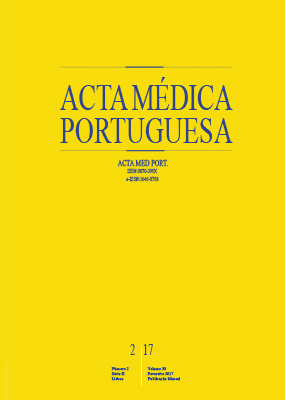Biliary Anastomosis in Liver Transplantation: With or Without T-Tube?
DOI:
https://doi.org/10.20344/amp.7287Keywords:
Anastomosis, Surgical, Liver Transplantation/methodsAbstract
Introduction: Biliary complications occur in 10-30% of liver transplants. The aim of this study was to compare the incidence of these complications in liver transplants when the T-tube was or was not used during the biliary anastomosis.
Material and Methods: Analysis of 2 groups of patients undergoing liver transplantation between 2008 and 2012. Patients were divided considering if the T-tube was used (G1) or if it was not (G2). We sought explanatory models of the occurrence of biliary complications by logistic regression, including the variables identified in the univariate analysis.
Results: We reviewed 506 consecutive patients who underwent a first liver transplant (G1 = 363, G2 = 143). The overall incidence of biliary complications was 24.7% (95% CI 21.1 to 28.6): 27.0% in G1 and 18.9% in G2 (p = 0.057). The incidences of stenosis and biliary fistula tended to be higher in G1: 19.6% (95% CI 15.7 to 23.8) vs 15.4% (95% CI 10.1 to 22.0) (p = 0.275) and 6.6% (95% CI 4.4 to 9.5) vs 2.8% (95% CI 0.9 to 6.6) (p = 0.091). We did not find statistically significant differences in the rates of endoscopic retrograde cholangiopancreatography, reoperation and retransplantation. There were two deaths in G1. There was no association between the occurrence of biliary complications and the diameters of the biliary tract nor the time of cold ischemia. The explanatory model, adjusted to the recipient and the donor age’s and to the initial diagnosis, identifies the use of the T-tube as increasing the possibility of the occurrence of biliary complications (AdjOR 1.71, 95% CI 1.04 to 2.80; p = 0.034).
Discussion and Conclusion: The use of the T-tube should be a decision taken on a case-based intraoperative judgment of experienced surgeons
Downloads
Downloads
Published
How to Cite
Issue
Section
License
All the articles published in the AMP are open access and comply with the requirements of funding agencies or academic institutions. The AMP is governed by the terms of the Creative Commons ‘Attribution – Non-Commercial Use - (CC-BY-NC)’ license, regarding the use by third parties.
It is the author’s responsibility to obtain approval for the reproduction of figures, tables, etc. from other publications.
Upon acceptance of an article for publication, the authors will be asked to complete the ICMJE “Copyright Liability and Copyright Sharing Statement “(http://www.actamedicaportuguesa.com/info/AMP-NormasPublicacao.pdf) and the “Declaration of Potential Conflicts of Interest” (http:// www.icmje.org/conflicts-of-interest). An e-mail will be sent to the corresponding author to acknowledge receipt of the manuscript.
After publication, the authors are authorised to make their articles available in repositories of their institutions of origin, as long as they always mention where they were published and according to the Creative Commons license.









